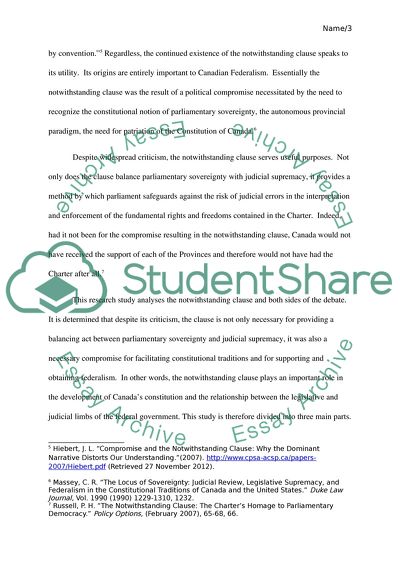Cite this document
(The Specific Clause in Canadian Constitution Is a Champion of Federali Research Paper, n.d.)
The Specific Clause in Canadian Constitution Is a Champion of Federali Research Paper. Retrieved from https://studentshare.org/law/1788548-canadian-constitutional-politics-the-notwithstanding-clause-as-a-champion-of-federalism
The Specific Clause in Canadian Constitution Is a Champion of Federali Research Paper. Retrieved from https://studentshare.org/law/1788548-canadian-constitutional-politics-the-notwithstanding-clause-as-a-champion-of-federalism
(The Specific Clause in Canadian Constitution Is a Champion of Federali Research Paper)
The Specific Clause in Canadian Constitution Is a Champion of Federali Research Paper. https://studentshare.org/law/1788548-canadian-constitutional-politics-the-notwithstanding-clause-as-a-champion-of-federalism.
The Specific Clause in Canadian Constitution Is a Champion of Federali Research Paper. https://studentshare.org/law/1788548-canadian-constitutional-politics-the-notwithstanding-clause-as-a-champion-of-federalism.
“The Specific Clause in Canadian Constitution Is a Champion of Federali Research Paper”, n.d. https://studentshare.org/law/1788548-canadian-constitutional-politics-the-notwithstanding-clause-as-a-champion-of-federalism.


